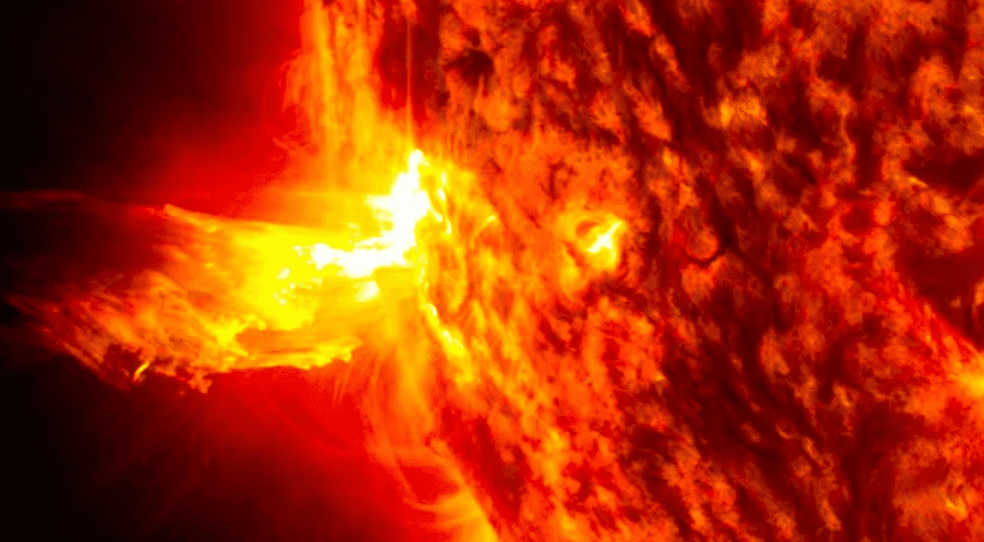Solar flares are flaring up again, and they’re giving us all a run for our frequencies. Since yesterday, powerful solar activity from our favorite blazing star has caused radio blackouts around the world. If you’ve been noticing strange radio disruptions or GPS hiccups lately, you can thank the Sun’s mischievous mood swings. Let’s dive into the details of what’s happening, why it matters, and whether we can expect more flare-ups in the coming days.
The Breakdown on Solar Flares: What’s an X-Class Anyway?
For the uninitiated, solar flares are bursts of high-energy radiation from the Sun, usually popping up from sunspots, which are basically the Sun’s temperamental, magnetically active regions. Flares are classified on a scale from A (the tamest) to X (the wildest), with each class ten times stronger than the last. X-class flares, like the recent X2.3-class flare that ignited blackouts over the Atlantic and South America, are the crème de la crème of cosmic tantrums. Just imagine the Sun throwing a fiery fit, and you’re on the receiving end of its radio-silencing roar.
This recent X2.3 flare wasn’t alone; a cluster of M-class flares has also been throwing static over Africa and the Indian Ocean. And here’s a bit of cosmic trivia for you: each class of flare is roughly ten times more powerful than the previous one. So, if you thought an M-class flare was intense, multiply that by ten, and that’s what an X-class flare packs.
Why Do Solar Flares Mess with Our Radios?
When these flares reach Earth, they collide with the ionosphere, our atmosphere’s very own bouncer that usually reflects radio waves, helping signals travel across long distances. But when a solar flare crashes into the ionosphere, it gets hyper-ionized and absorbs frequencies below 30 MHz, resulting in radio blackouts. So, if you’re a ham radio operator, this is your nemesis; it’s like trying to shout across a room only to have the walls swallow every word.
Airline communication, military signals, maritime channels, and even emergency broadcasts can feel the pinch. GPS is not immune either – those degraded signals can throw off navigation systems on planes, ships, and sometimes even your phone. For airlines, especially those flying over the poles where solar radiation hits hardest, these flares can force some serious rerouting. Imagine planning a direct path only to be told you’ll be taking a detour – courtesy of a solar flare.
What Regions Are in the Crosshairs?
The latest flares have come from sunspot regions with ominous-sounding names like AR3883, AR3886, and the big bruiser AR3889 in the Sun’s Southern Hemisphere. The NOAA Space Weather Prediction Center has been tracking these troublemakers closely, noting that solar activity levels have shot up, with ten M-class flares and one X-class flare just within the past day.
NOAA warns we’re not out of the woods yet. There’s a 35% chance of more X-class flares popping up over the next couple of days and a solid 80% chance we’ll see more M-class flares. These sunspots have a history of producing major flares, and their “magnetic complexities” suggest they’re just warming up.
The Sun emitted a strong solar flare on Nov. 6, 2024, peaking at 8:40 a.m. ET. NASA’s Solar Dynamics Observatory captured an image of the event, which was classified as X2.3. https://t.co/ShmsbiXgMF pic.twitter.com/Q3AZem2bIf
— NASA Sun & Space (@NASASun) November 6, 2024
What Could Be Next?
The Sun is in an active phase of its 11-year solar cycle, which typically includes around 2,000 M-class flares and roughly 175 X-class flares. Rarely, we get an X10-class flare – ten times stronger than your average X1 – and these super powerful events have only been recorded a handful of times.
Already, this solar cycle has gifted us a record-breaking X9.0-class flare just last month. Each new solar outburst raises the stakes for more frequent and intense flares. If you’re wondering how intense these can get, it’s worth noting that flares stronger than X10-class have only been seen about eight times per cycle.
A Cautionary Tale for Our Tech-Driven World
As we lean more and more on wireless tech, we’re also putting ourselves at the mercy of space weather. While some might brush off solar flares as esoteric space phenomena, for those in industries that rely on clear, uninterrupted signals, these flares mean real-world consequences. From navigation accuracy for transportation systems to military and emergency communications, solar activity is more than a spectacle – it’s a global disruptor.
So, as the Sun’s mood swings continue, keep an eye on those NOAA forecasts. With more flares likely in the near future, we may be in for a few more surprise radio blackouts. Whether you’re a ham radio enthusiast, a pilot flying polar routes, or just someone who likes a good piece of sky-gazing drama, the Sun’s antics are sure to keep things interesting.












Leave a Reply